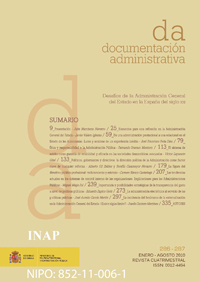Importance and strategic potential of spending transparency at public policy level
DOI:
https://doi.org/10.24965/da.v0i286-287.9671Keywords:
Transparency, public expenditure, public policy, participation, evaluation, innovationAbstract
Fiscal transparency aims at compliance with traditional budgetary principles and fiscal discipline. Essentially it consists in making accessible information on observance of budgetary rules and publishing public sector budgets and accounts. In this regard, the interest and advancement of most countries of the OECD and the EU, including Spain to a certain extent, are progressing. This paper argues in favour of a more far-reaching approach to transparency in spending, taking into account the relevance of information for different facets of citizens (tax payerinvestor, user of public service and public policies stakeholders) at different levels of spending aggregation. Transparency has great importance and meaning as strategic policy instrument public or pre-condition of evaluation, participation, collaboration and related drivers of innovation and adaption of spending programmes to citizens’preferences. Transparency can be a good antidote against future crises. Without transparency there is no pressure or incentive to the correction of budgetary unruly behaviour. But the mere production and dissemination of information and budgetary statistics is not necessarily an increase in knowledge about the quality of expenditure. It is necessary to develop the capacity to both create and communicate knowledge about the efficiency and effectiveness of public policies and build social and market confidence to accept this knowledge.











